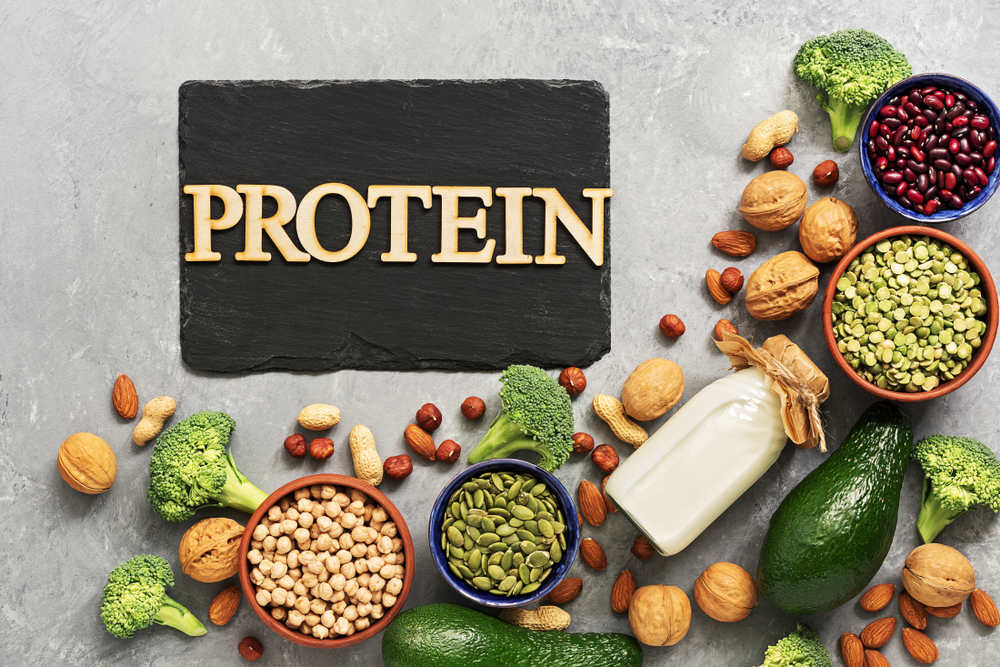I hope you have enjoyed my series so far on simple and sensible weight loss tips. If you have missed my first four sensible tips please take a read. I have used this programme in clinic for years. People learn to eat normally and with control. They have more energy and some even say their taste changes, with processed sweet foods just tasting “too sweet”.
So today is my next simple and sensible weight loss tip Number 5: Add protein to each meal – protein is vital, as it is the basic building block for cells muscles, bone, hair, skin and nails. Protein should be included in each meal as it slows down the digestion of carbohydrates.
Another mission in your quest to reduce fat around the middle is to control your body’s natural inflammatory process. Foods like red meat can cause inflammation, so it is better to substitute with other forms of protein like eggs and fish. Contrary to the old myth, although eggs are high in cholesterol, they are low in saturated fat and can contain good levels of omega 3 if the chickens have been fed well. Choose organic, free-range eggs, as the diet is extremely important to the quality of the egg. Try also to reduce your milk intake, or at least try to drink organic milk. Quinoa and ancient seed similar when cooked to cous cous, is an excellent source of protein for vegetarians.
How much protein do I need each day?
Adults
The Reference Nutrient Intake (RNI) is set at 0.75 g of protein per kilogram bodyweight per day in adults.
For example:
- if an adult weighs 60 kg, they will need:
- 60 x 0.75 g/d = 45 g protein a day
- if an adult weighs 74 kg, they will need:
- 74 x 0.75 g/d = 55.5 g protein a day
Protein requirements increase in pregnancy (an additional 6 g/d) and lactation (an additional 11 g/d 0-6 months and 8 g/d 6+ months)
All Protein Isn’t Alike
Some of the protein you eat contains all the amino acids needed to build new proteins. This kind is called complete protein. Animal sources of protein tend to be complete. Other protein sources lack one or more “essential” amino acids—that is, amino acids that the body can’t make from scratch or create by modifying another amino acid. Called incomplete proteins, these usually come from fruits, vegetables, grains, and nuts.
Vegetarians need to be aware of this. To get all the amino acids needed to make new protein—and thus to keep the body’s systems in good shape—people who don’t eat meat, fish, poultry, eggs, or dairy products should eat a variety of protein-containing foods each day.
A 6-ounce steak is a great source of complete protein—about 40 grams worth. But it also delivers about 38 grams of fat, 14 of them saturated. That’s more than 70 percent of the recommended daily intake for saturated fat. The same amount of salmon gives you 34 grams of protein and 18 grams of fat, 4 of them saturated. A cup of cooked lentils has 18 grams of protein, but under 1 gram of fat.
The bottom line is that it’s important to pay attention to what comes along with the protein in your food choices. Vegetable sources of protein, such as beans, nuts, and whole grains, are excellent choices, and they offer healthy fibre, vitamins, and minerals. Nuts are also a great source of healthy fat.
The best animal protein choices are fish and poultry. If you are partial to red meat, such as beef, pork, or lamb, stick with the leanest cuts, choose moderate portion sizes, and make it only an occasional part of your diet, for several reasons: Research suggests that people who eat even modest amounts of red meat have a higher risk of developing colon cancer, heart disease, and diabetes, and a higher risk of dying from heart disease, cancer, or any cause.
Fiona Waring
Dip Nut, BSc.(Hons), MSc PHN, ANutr
Nutritional Therapist
M: +44 07957 267 964
eatyourgreens@fionawaring.com
‘Registered with the Association for Nutrition – www.associationfornutrition.org
Protecting the public and promoting high standards in evidence-based science and professional practice of nutrition.’
